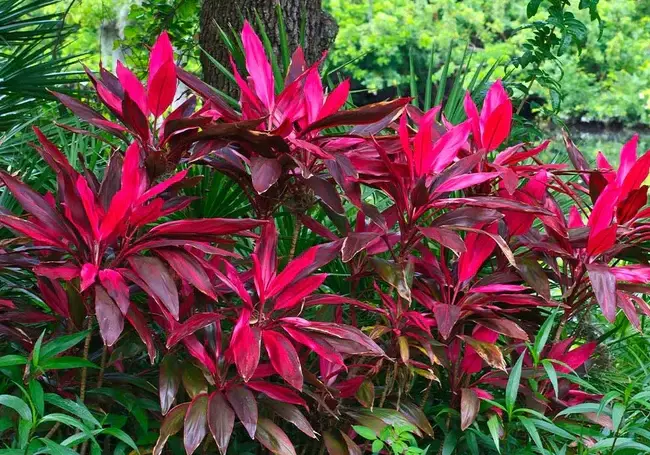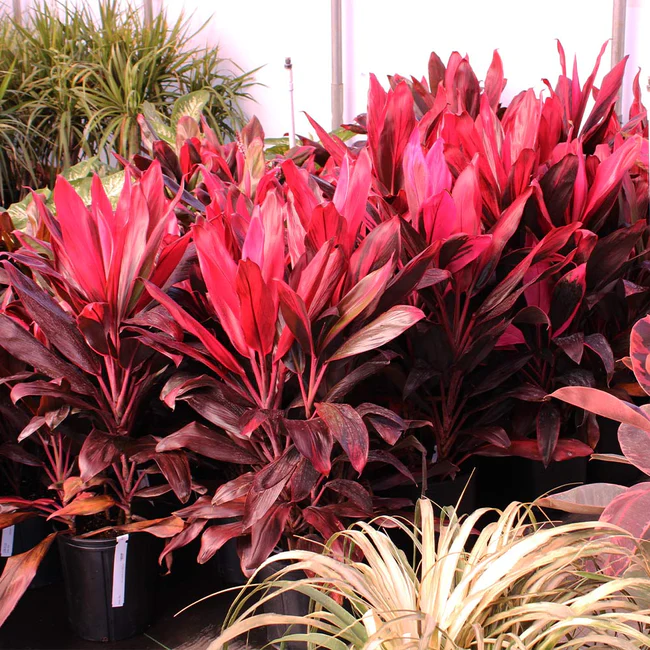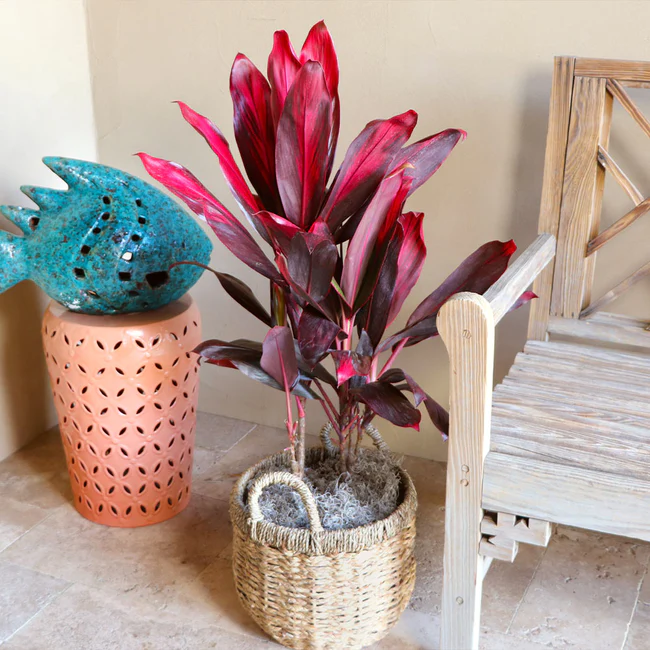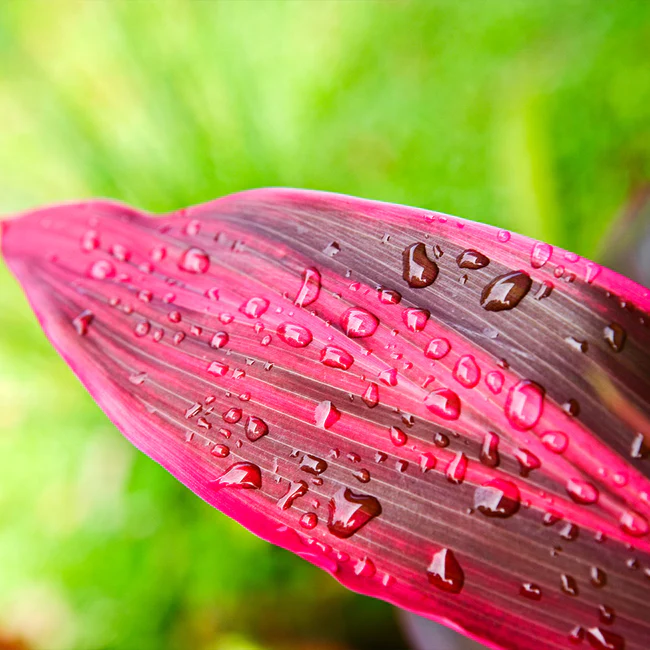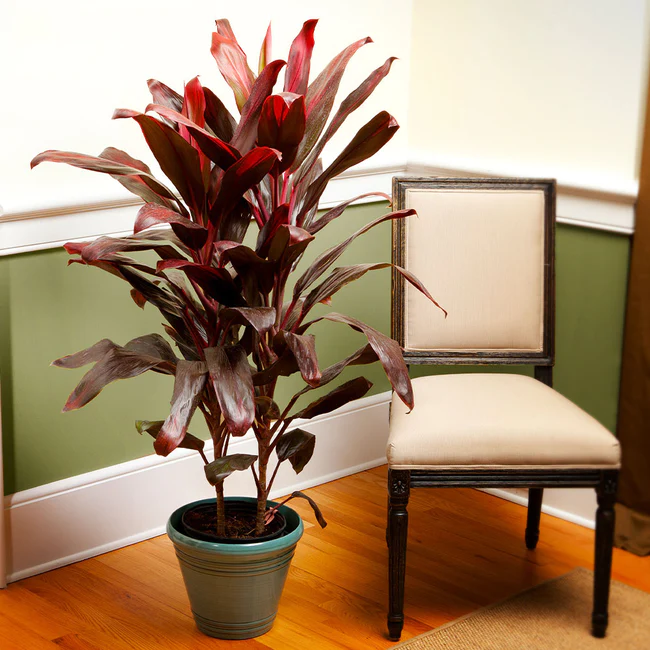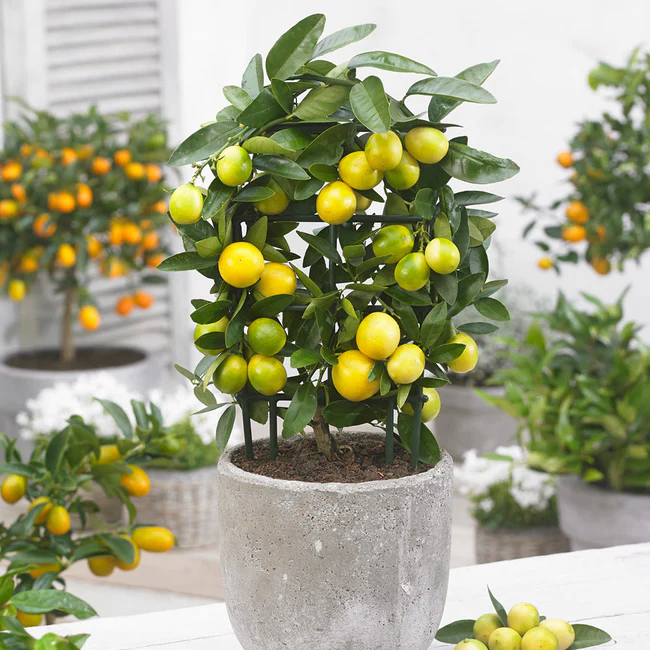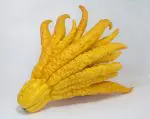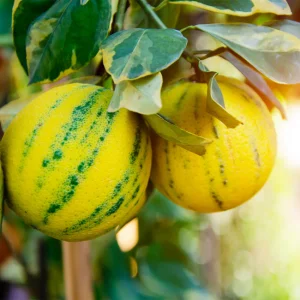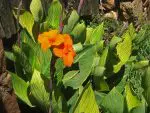This post contains affiliate links. If you buy something from one of our links we may earn a commission. Thanks
Are you looking to add a pop of color and life to your indoor space? Ti plants, also known as the Hawaiian Ti plant or cordyline, might just be the solution you’re looking for.
Growing Hawaiian Ti plant indoors requires a blend of right soil, light, and water. Opt for well-draining soil, bright indirect light, and keep the soil evenly moist, watering when the top inch dries out. Ensure temperatures remain between 60-85°F and humidity levels are kept at 40-60%. For added growth, fertilize bi-weekly during the growing seasons.
With their vibrant leaves and easy care requirements, Ti plants are a popular choice for indoor gardening.
But to ensure they thrive, it’s important to follow some simple care Tips. In this blog post, we’ll share 7 proven Tips for Ti plant care indoors.
What Is A Ti Plant?
Ti plant, also known as Hawaiian Ti or cordyline, is a type of tropical evergreen plant native to Southeast Asia and the Pacific Islands.
It is known for its vibrant, colorful leaves that come in shades of green, red, yellow, and pink.
Ti plants are often used in indoor and outdoor landscaping, as well as for traditional cultural purposes in Hawaiian and Pacific Islander cultures.
Ti plants are easy to care for and can thrive in a variety of conditions, making them a popular choice for indoor gardening.
From Wikipedia:
Cordyline fruticosa is an evergreen flowering plant in the family Asparagaceae. The plant is of great cultural importance to the traditional animistic religions of Austronesian and Papuan peoples of the Pacific Islands, New Zealand, Island Southeast Asia, and Papua New Guinea. It is also cultivated for food, traditional medicine, and as an ornamental for its variously colored leaves. It is identified by a wide variety of common names, including Ti plant, palm lily, cabbage palm.
A Word About Buying A Hawaiian Ti Plant
Many merchants do not sell live plants and instead offer Ti logs. After all, they are easier to ship. But they can take months to start growing.
So if you want a Ti Plant you should buy a live plant. They may cost more but you can start enjoying them immediately. You can get them here at Fast Growing Trees.
Importance Of Indoor Ti Plant Care:
To ensure your Ti plant thrives indoors, it’s important to provide the right conditions for growth.
Proper care will not only keep your plant healthy, but also add a pop of color and life to your indoor space.
In this blog post, we will share 7 proven Tips for Ti plant care indoors.
These Tips will help you create the perfect environment for your Ti plant and ensure it thrives for years to come.
Tip 1: Choose the Right Pot and Soil
One of the most important aspects of Ti plant care indoors is choosing the right pot and soil.
The pot you select for your Ti plant will not only affect its growth, but also its overall health.
In this section, we will discuss the factors you should consider when selecting the right pot and soil for your Ti plant.
Explanation of Pot Size and Material:
The size of the pot you choose for your Ti plant is important because it affects the plant’s root system.
It’s best to choose a pot that is only slightly larger than the root ball, as this will prevent over-potting and root rot.
In terms of material, choose a pot that is well-draining and made from a material that won’t retain excess moisture, such as ceramic or plastic. Make sure the pot you use has drainage holes.
Importance of Well-Draining Soil:
To keep your Ti plant healthy, it’s crucial to use a well-draining soil. Over-watering is one of the biggest threats to Ti plants, so well-draining soil helps to prevent this.
Choose a potting mix that is specifically formulated for tropical plants and contains organic matter to improve drainage.
Some people use a peat moss mix for their cordyline plants or a peat-based potting soil.
I prefer a 50/50 mix of coco coir and perlite for Ti plants. It is a more environmentally friendly alternative to sphagnum peat and has excellent water-holding and drainage properties.
C. Adding a Layer of Gravel for Drainage:
To further improve drainage, add a layer of gravel to the bottom of the pot before adding your potting mix. This will create additional space for excess water to collect, reducing the risk of root rot.
With the right pot, soil, and drainage, your Ti plant will have the best chance for success indoors.
Tip 2: Provide Adequate Light
One of the most important factors in Ti plant care indoors is providing adequate light. Ti plants are native to tropical regions, so they are used to bright, indirect light.
In this section, we will discuss how to provide the right amount of light for your Ti plant to thrive indoors.
Importance of Bright, Indirect Light:
Ti plants need bright, indirect light to grow and remain healthy. The easiest way to give it light is to place your Ti plant near a south-facing window that provides bright, indirect light.
You can also safely give it full sun indoors but outdoors filtered light is best and you can give it some partial shade.
Outdoors you will want to provide the bright, indirect light that the plant needs, without exposing it to much direct sunlight.
If your plant is not getting enough light, it will become spindly and have poor growth. It will also lose its bright colors.
Placement Near a Window with Filtered Light:
The ideal place for your Ti plant is near a window that provides bright, indirect light.
Using Artificial Light if Necessary:
If you don’t have a window that provides enough light, you can use artificial light to supplement the plant’s needs.
LED grow lights or fluorescent lights can provide the bright, indirect light that the Ti plant needs to grow and thrive.
Just be sure to place the lights close enough to the plant to provide the right amount of light, but not so close that they will burn the plant.
Tip 3: Maintain the Right Temperature and Humidity
In addition to light, temperature, and humidity are also important factors in Ti plant care indoors.
Maintaining the right temperature and humidity during the growing season will help to keep your Ti plant healthy and thriving.
In this section, we will discuss how to maintain the right conditions for your Ti plant.
Optimal Temperature Range for Ti Plants:
Ti plants prefer warm temperatures ranging from 60-85 degrees Fahrenheit. If the temperature dips below 60°F, the plant may become stressed and its growth may slow down.
If the temperature goes above 85°F, the plant may become wilted and yellow leaves may appear. It’s important to monitor the temperature in your home and keep your Ti plant away from cold drafts or hot air vents.
Importance of Humidity Levels:
Ti plants are native to tropical regions, so they are used to growing in a humid environment.
If the air in your home is too dry, the plant may become stressed and its leaves may turn brown at the edges.
To maintain high humidity levels, keep your Ti plant away from cold drafts and use a humidifier if necessary.
You can also try placing your plant on a pebble tray to help increase humidity.
Make sure the pebbles are not totally submerged because you don’t want the pot sitting in standing water.
Pebble trays are for adding humidity and not for watering.
Keeping Ti Plants Away from Cold Drafts and Using a Humidifier:
Cold drafts can cause stress and damage to your Ti plant, so it’s important to keep it away from doors, windows, and air vents.
If the air in your home is too dry during the winter months you can use a humidifier to increase the humidity levels.
This will help to keep your Ti plant healthy and thriving.
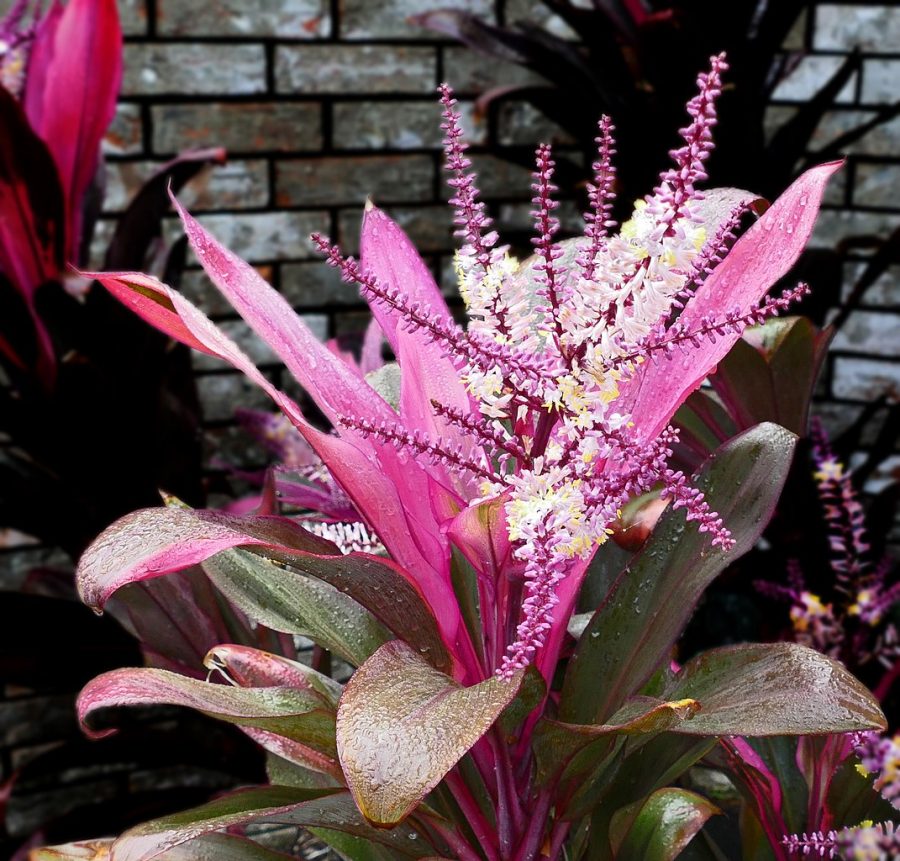
Tip 4: Watering Schedule
Watering is an important aspect of Ti plant care indoors. In this section, we will discuss the optimal watering schedule for Ti plants and how to avoid over-watering or under-watering.
Explanation of Evenly Moist Soil Preference:
Ti plants prefer soil that is evenly moist, but not waterlogged. Over-watering can lead to root rot, which is a common problem for indoor plants.
To avoid over-watering, it’s important to let the top inch of soil dry out between waterings.
Avoiding Over-Watering:
Over-watering is a common problem for indoor plants, including Ti plants. To avoid over-watering, it’s important to let the top inch of soil dry out between waterings.
If you’re not sure if the soil is dry you can stick your finger into the top of the soil to test the moisture level. If the soil feels dry to the touch, it’s Time to water your Ti plant.
Water when the Top Inch of Soil is Dry:
To determine when to water your Ti plant, it’s important to keep an eye on the top inch of soil. When the top inch of soil is dry, it’s time to water your plant.
You can use a finger to test the moisture level of the soil. Make sure to water thoroughly, so that water reaches the roots of the plant, but be careful not to over-water.
Ti plants can be sensitive to chlorine and fluorides in tap water so use distilled water, or RO water or add a water filter to your tap.
Tip 5: Fertilizing and Pruning
In order to keep your Ti plant healthy and thriving, it’s important to provide it with adequate nutrition and prune it regularly.
In this section, we will discuss the benefits of fertilizing and the importance of pruning in Ti plant care indoors.
The Benefits of FerTilizing:
Fertilizing is an important part of Ti plant care indoors. Regular fertilizing can help provide your plant with the necessary nutrients it needs to grow and stay healthy.
Fertilizing also encourages healthy leaf growth and can help keep the plant looking its best.
Choosing a Balanced Fertilizer:
When choosing a fertilizer for your Ti plant, it’s important to choose a balanced fertilizer that contains the right balance of nutrients for your plant.
A balanced fertilizer will help ensure that your Ti plant is getting the nutrients it needs to grow and thrive.
You can use a liquid fertilizer but keep fertilizer off the leaves or you will get fertilizer burn.
Using a slow-release fertilizer like these plant spikes is the best way to fertilize your Ti plants.
I recommend using Jobes houseplant food spikes.
They are easy to use and last for 2 months.
They are designed for container-grown houseplants.
Try using 2 spikes for a 12-inch pot or 3 for an 18-inch pot takes the guesswork out of ferTilizing.
They provide a 13-4-5 fertilizer blend. Easier to use than liquids and no spills
Controlling the Size and Shape of the Ti Plant through Pruning:
Pruning is an important aspect of Ti plant care indoors. Pruning helps control the size and shape of your plant and can also encourage healthy new growth.
To prune your Ti plant, simply cut back the stems to the desired length, making sure to cut just above a node.
This will encourage new growth and help keep your Ti plant looking its best.
Tip 6: Pest and Disease Management
Ti plants, like any other indoor plants, can be susceptible to pests and diseases.
It’s important to be aware of common pests and diseases that can affect Ti plants and to take prompt action if you notice any signs of infestation.
In this section, we will discuss the common pests and diseases that can affect Ti plants, and what you can do to prevent and treat them.
Common Pests and Diseases:
Common pests and diseases that can affect Ti plants include spider mites, mealybugs, root rot, and leaf spot.
Understanding the symptoms of these pests and diseases will help you quickly identify and treat any issues that may arise.
Signs of Infestation:
Some common signs of pests and diseases in Ti plants include yellowing or wilting leaves, stunted growth, and the presence of webs or sticky residue on the leaves or stems.
If you notice any of these signs, it’s important to take prompt action to prevent the spread of the infection.
Importance of Prompt Treatment:
The earlier you identify and treat pests and diseases in Ti plants, the better the chances of saving the plant.
Prompt treatment can help prevent the spread of the infestation and keep your Ti plant healthy and thriving.
If you’re unsure how to treat a specific pest or disease, consult a local nursery or gardening expert for advice.
Treatment Methods:
There are several treatment methods for common pests and diseases in Ti plants, including:
Physical removal: For pests such as spider mites, physically removing the pests from the plant can be an effective treatment method. Use a soft cloth to gently remove any visible pests and their webs from the plant.
Neem oil: Neem oil is a natural insecticide that can be used to treat pests such as mealybugs and spider mites. Simply mix a small amount of neem oil with water and spray it on the affected areas of the plant.
Fungicides: For diseases such as root rot and leaf spot, fungicides can be an effective treatment method. Choose a fungicide that is specifically designed for indoor plants, and follow the instructions carefully.
Proper watering: Over-watering can lead to root rot, so it’s important to avoid overwatering your Ti plant and to allow the soil to dry out between waterings.
Proper pruning: Proper pruning can help control the size and shape of your Ti plant, and can also prevent the spread of pests and diseases by removing any infected or infested areas.
Remember, it’s always best to consult a local nursery or gardening expert for specific advice on treating pests and diseases in Ti plants.
Tip 7: Repotting:
Repotting your Ti plant every 2-3 years is essential to its health and growth. Here are some tips to make sure your repotting goes smoothly:
The need for repotting every 2-3 years:
As Ti plants grow, they need more room for their roots to spread out. Repotting your Ti plant every 2-3 years will help ensure that it has enough space to grow and will also provide fresh soil for optimal growth.
Choosing a well-draining potting mix:
When repotting, it’s important to choose a well-draining potting mix that will provide good aeration for the roots.
A good potting mix will be light and airy and will allow water to drain freely.
Selecting a pot that is only slightly larger than the root ball:
When selecting a pot for repotting, choose one that is only slightly larger than the root ball of your Ti plant.
A pot that is too large can lead to over-watering and root rot, while a pot that is too small will not provide enough room for the roots to spread out.
With these tips, you can successfully repot your Ti plant and give it the best chance for healthy growth.
By following these 7 proven tips for Ti plant care indoors, you can transform your space with the vibrant beauty of Ti plants.
Whether you’re an experienced indoor gardener or just starting out, these tips will help you create the perfect environment for your Ti plant.
Bonus Tip: Ti Plant Propagation
Tī plant propagation is the process of creating new plants from existing ones.
The Benefits of propagating tī plants:
• Propagating Ti plants can help increase the number of plants in your collection.
• You can share plants with friends and family.
• Have a backup in case the original plant dies.
Stem Cuttings
Brief overview of stem cutting propagation method:
Stem-cutting propagation is a method of creating new Ti plants from stem cuttings taken from the parent plant.
Importance of proper cutting and rooting techniques:
Proper cutting and rooting techniques are crucial for the success of stem cutting propagation, as they determine the ability of the cutting to root and grow into a healthy new plant.
Considerations to keep in mind when propagating stem cuttings:
When propagating Ti plants through stem cuttings, it’s important to consider factors such as the time of year, the age of the stem cutting, and the type of rooting hormone to use, if any.
Division
Division is a propagation method that involves separating a mature Ti plant into multiple smaller plants, each with its own roots. Each of these can grow into a new plant.
Steps involved in dividing Ti plants:
The steps involved in dividing Ti plants include identifying healthy, mature plants, carefully removing the plant from its pot, dividing the root ball into smaller sections, and replanting each section in its own pot with fresh soil.
Key factors to consider when propagating Ti plants through division:
When propagating Ti plants through division, it’s important to consider factors such as the timing of the division, the size of the new plants, and the overall health of the parent plant.
Additionally, proper care and maintenance of the cuttings during the rooting process is crucial to ensure successful propagation.
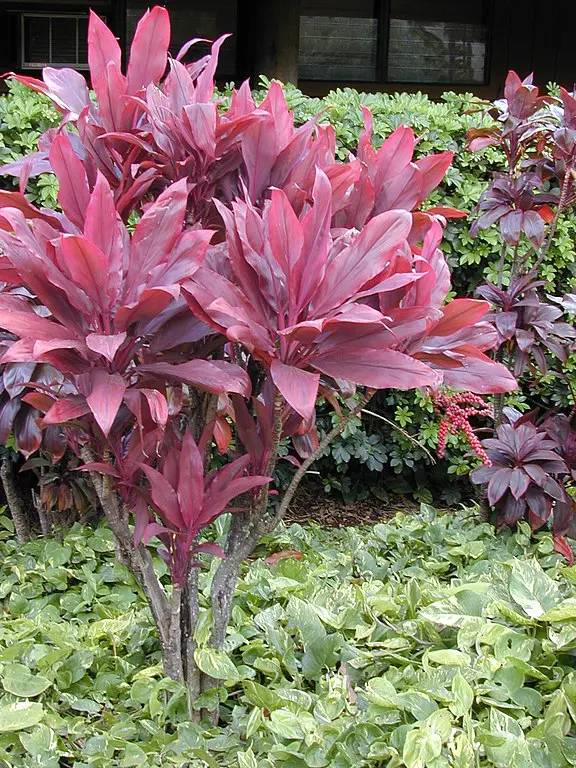
What Are Ti Logs?
Ti logs are pieces of the woody trunk of a Ti plant (Cordyline fruticosa) that are used for propagation.
They are often sold with their ends covered with wax to prevent dehydration during shipping.
If you decide to buy Ti logs you need to remove the wax and follow the nursery’s planting instructions.
To use them, the Ti log is first soaked in water to help promote root growth, then it can be planted in soil or water to encourage the development of new shoots and roots.
Using your own Ti logs can be a good way to start a Ti plant, especially if you already have an existing Ti plant that is growing well.
They provide a low-cost alternative to buying a new Ti plant, and they are a reliable method of propagating Ti plants.
However, it is important to understand that the success rate of propagating Ti plants from logs is not always guaranteed, and it may take several weeks or even months for new shoots and roots to develop.
FAQs about Hawaiian Ti Plant Care:
Unveiling the lush appeal of Hawaiian Ti plants in your living spaces can be a thrilling venture.
However, to nurture them to their full flamboyant potential, understanding their care requirements is key.
Here are some frequently asked questions to guide you through the essential aspects of cultivating these tropical beauties indoors, ensuring they flourish and continue to brighten up your abode.
Q. How often should I water my Ti plant?
A. Water when the top inch of soil is dry, usually once every 7 to 10 days.
Q. What type of fertilizer is best for Ti plants?
A. Use a balanced fertilizer, applying bi-weekly during spring and summer.
Q. How to propagate Ti plants?
A. Propagate through stem cuttings, division, or using Ti logs.
Q. What are the common pests affecting Ti plants?
A. Common pests include spider mites and mealybugs, treatable with neem oil or insecticidal soap.
Final Thoughts On Tī Plant Care Indoors (Quick Recap)
By following these 7 proven tips for Ti plant care indoors, you can transform your space with the vibrant beauty of Ti plants.
With proper care, you’ll enjoy their beauty for years to come. So why wait? Start incorporating Ti plants into your indoor garden today!
In this blog post, we shared 7 Proven Tips for Ti Plant Care Indoors and here is a quick recap:
• Choose the Right Pot and Soil:
Ti plants prefer well-draining soil and a pot that is slightly larger than the root ball. Make sure to use a pot with a drainage hole and place a layer of gravel at the bottom to help with drainage.
• Provide Adequate Light:
Ti plants prefer bright, indirect light. Place them near a window with filtered light, but avoid direct sun exposure. If you don’t have access to natural light, provide artificial light using fluorescent or LED lights.
• Maintain the Right Temperature and Humidity:
Ti plants prefer temperatures between 60-80°F and humidity levels between 40-60%. Keep them away from cold drafts and use a humidifier if necessary.
• Watering Schedule:
Ti plants prefer evenly moist soil, but avoid over-watering as this can lead to root rot. Water when the top inch of soil is dry.
• Fertilizing and Pruning:
Ti plants benefit from occasional fertilizing. Use a balanced fertilizer and follow the package instructions. Pruning can help to control the size and shape of your Ti plant.
• Pest and Disease Management:
Ti plants are relatively pest and disease-free, but spider mites and scale insects can sometimes be a problem. Keep an eye out for any signs of infestation and treat them promptly.
• Repotting:
Repot Ti plants every 2-3 years, or when the roots have outgrown the pot. Use a well-draining potting mix and choose a pot that is only slightly larger than the root ball.
Ti Plant Propagation
We also covered the three main methods of Ti plant propagation: stem cuttings, division, and leaf cuttings.
Each method offers unique advantages and considerations, and it is essential to understand these techniques to successfully propagate Ti plants.
Understanding Ti plant propagation is important because it allows you to grow new plants and increase your collection without having to purchase new ones.
Additionally, propagating Ti plants can help preserve the species and keep them thriving for generations to come.
By following these 7 proven tips for Ti plant care indoors, and Ti plant propagation tips you can transform your space with the vibrant beauty of Ti plants.
With proper care, you’ll enjoy their beauty for years to come. So why wait? Start incorporating Ti plants into your indoor garden today!
Buy your Hawaiian Ti Plant Here
20 Benefits Of Keeping Indoor Plants For Improved Lifestyle

